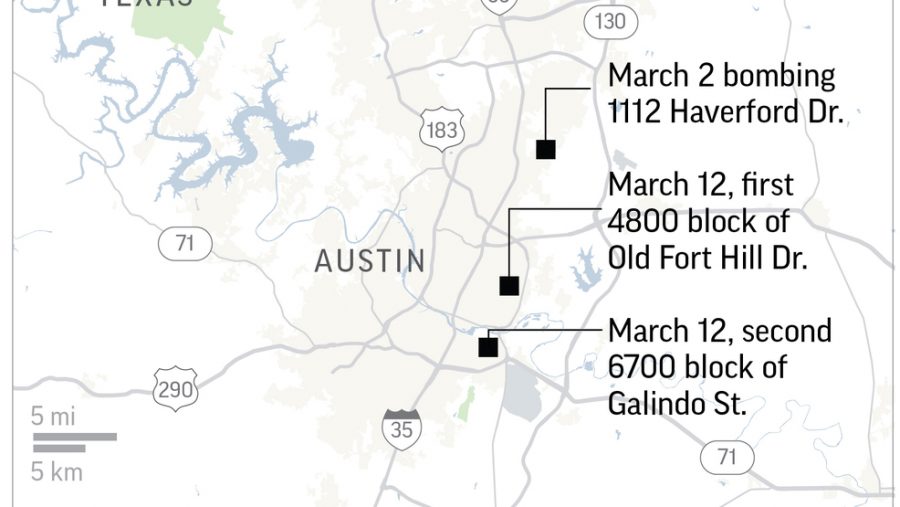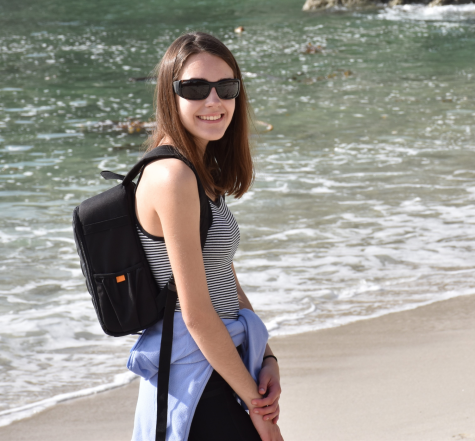Tragedies in Austin, Texas
The map shows where the first three bombs were sent.
March 29, 2018
At the beginning of March, a man of age 39 found a package on his doorstep. What he did not know was that the package contained a bomb which was detonated and would be the cause of his death. This man, Anthony Stephan House, was the first victim of the Austin bomb threats that would continue for the next two weeks. He was killed on March 2nd, 2018.
A little more than a week later, a teenage boy of age 17 received a similar package. Upon opening it, he was also killed by the bomb inside. His mother was injured by the explosion but was not killed. Draylen Manson, known to be “a very happy young man with so much energy” by one of his community college professors. He died March 12, 2018. “A lot of young people have been losing their lives to terrorism by people in their own country,” addresses Melody Saba (11). “All their potential is wiped away because of [these] hateful people.”
Just a few hours later, Esperanza Herrera found a package on the front door when she was visiting her mother. This package exploded, just like the other two. She was severely injured but luckily did not die.
By this time, the police and the FBI were investigating to try to find the mysterious sender of these poisonous packages. Evidently, the person had knowledge about making and setting off bombs since he/she was able to keep the bomb from exploding when making and delivering it. The Attorney General and Police Chief had to advise caution to all the people of Austin while they investigated. They even sent out a message to have people call if they should receive an unexpected package. The news of potential bomb threats spread fear in the hearts of the inhabitants of Austin. Investigators had little clues as to who the person could be or the person’s incentive. One of their working theories was that it was hate crimes, possibly targeting the victims based on their race. Both Anthony House and Draylen Manson were African Americans, and Esperanza Herrera was a Hispanic woman. Another working theory is that it was to stimulate fear.
Six days later, the bomber struck again. Something was different this time: the bomb in the package was not placed at someone’s doorstep, nor was it in the same area as the previous three bombs. Instead of targeting someone specifically, the bomb was triggered by a tripwire, meaning that any passerby could be harmed: a child, a mother, a father, a grandfather, anyone. Two men were injured by this explosive on March 18th. The residents of Austin grew more fearful of the potential bombs. No one knew where or when the next one would hit, or who it might target.
It was not until March 20th that the bomber made a mistake that enabled the authorities to reveal his identity. A bomb was found, unexploded, at a FedEx near Austin’s airport. Another bomb went off at a FedEx near San Antonio. Just like on March 18th, the bomber changed his tactics. However, all of these tragedies helped to lead the FBI and police to the suspect.
On March 21st, the suspect was tracked down, but just as the police had cornered him, he blew himself up in his car. The bomber was later identified to be 23-year-old Mark Anthony Conditt. Many questions still remain regarding the bombings. What were his motives? How was he able to build bombs? Did he have any accomplices? Over the course of the next few days, police have been investigating.





































